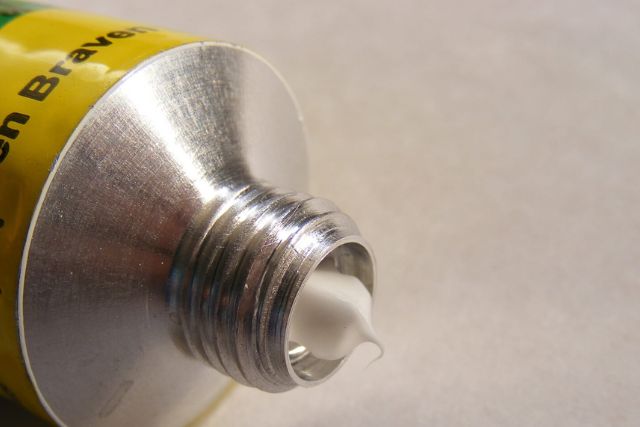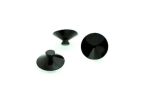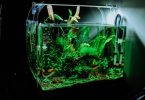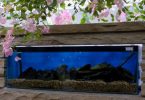Table of Contents
Gorilla Glue is a popular adhesive used to bond various materials, including glass, metal, and wood. However, when it comes to using Gorilla Glue in aquariums, many people wonder whether it is safe for their aquatic pets.
Generally speaking, Gorilla Glue is not considered aquarium safe, as even small amounts can be deadly to fish and other aquatic creatures. The adhesive can also cause damage to tank silicone seals and filters, leading to leaks and other problems. However, the Gorilla Glue website claims that their product is an aquarium-safe super glue that works well underwater.
It is important to note that using Gorilla Glue in aquariums requires proper application and caution. While the adhesive itself may not be harmful to fish and other aquatic creatures, improper use can result in harm to the animals.
Additionally, it is important to ensure that the glue does not come into contact with any living organisms in the tank.
What is Gorilla Glue?
Gorilla Glue is a popular brand of polyurethane-based adhesive that is known for its strong bonding capability.
It is commonly used for various DIY projects and repairs, including those involving wood, metal, ceramic, and plastic materials.
Gorilla Glue is a one-part adhesive that requires moisture to activate and cure. It is also water-resistant and can withstand extreme temperatures.
The main ingredient in Gorilla Glue is polyurethane, which is a polymer that is commonly used in the production of foam insulation, mattresses, and furniture.
Polyurethane is known for its strength and durability, making it an ideal ingredient for adhesives. However, it can also release harmful fumes when it dries, which can be harmful to humans and animals.
Gorilla Glue also contains cyanoacrylate, which is a fast-drying adhesive commonly used in superglue. Cyanoacrylate is known for its strong bonding capability, but it can also be irritating to the skin and eyes. Therefore, it is important to use Gorilla Glue in a well-ventilated area and avoid prolonged exposure to the fumes.
Overall, Gorilla Glue is a strong adhesive that can be used for various applications. However, it is important to consider its ingredients and potential risks before using it in certain environments, such as aquariums.
Is Gorilla Glue Safe for Aquariums?
When it comes to attaching decorations to an aquarium, many aquarium owners wonder if Gorilla Glue is safe to use. While Gorilla Glue is a popular adhesive, it is important to consider a few factors before using it in an aquarium.
Factors to Consider
One of the most important factors to consider when using Gorilla Glue in an aquarium is the type of Gorilla Glue being used.
Some types of Gorilla Glue may contain harmful chemicals that can be dangerous to fish and other aquatic life. It is important to check the label of the Gorilla Glue being used to ensure that it is safe for use in an aquarium.
Another important factor to consider is the amount of Gorilla Glue being used. While Gorilla Glue can be a great adhesive for attaching decorations to an aquarium, it is important to use it in moderation. Using too much Gorilla Glue can cause harm to fish and other aquatic life.
Types of Gorilla Glue
There are several types of Gorilla Glue available on the market, including Gorilla Super Glue, Gorilla Epoxy, and Gorilla Construction Adhesive. Each type of Gorilla Glue has its own unique properties and is designed for specific applications.
Gorilla Super Glue is a fast-drying adhesive that is ideal for small repairs and projects. Gorilla Epoxy is a two-part adhesive that is designed for bonding materials that are difficult to glue together, such as metal and plastic.
Gorilla Construction Adhesive is a heavy-duty adhesive that is designed for use in construction and home improvement projects.
Alternatives to Gorilla Glue
While Gorilla Glue can be a great adhesive for attaching decorations to an aquarium, there are several alternatives that may be safer for use in an aquarium.
Aquarium-safe silicone sealant is a popular alternative to Gorilla Glue, as it is designed specifically for use in aquariums and is safe for fish and other aquatic life.
Another alternative to Gorilla Glue is aquarium-safe epoxy. Aquarium-safe epoxy is a two-part adhesive that is designed for use in aquariums and is safe for fish and other aquatic life.
In conclusion, while Gorilla Glue can be safe for use in an aquarium, it is important to consider the type of Gorilla Glue being used and the amount being used. Aquarium owners may want to consider using alternative adhesives that are specifically designed for use in aquariums to ensure the safety of their fish and other aquatic life.
How to Use Gorilla Glue in Aquariums
When using Gorilla Glue in aquariums, it is important to follow proper preparation, application, and curing procedures to ensure the safety of your aquatic pets. Here are the steps to follow:
Preparation
- Clean the surfaces to be bonded thoroughly to remove any dirt, dust, or debris.
- Dry the surfaces completely to prevent water from interfering with the bonding process.
- Apply a primer if necessary to improve the adhesion of the glue to the surfaces.
Application
- Apply a small amount of Gorilla Glue to one of the surfaces to be bonded. Remember that Gorilla Glue expands as it dries, so use it sparingly.
- Press the surfaces together firmly and hold them in place for at least 10-45 seconds, depending on the materials being bonded.
- Wipe away any excess glue with a damp cloth or sand it off once it has dried.
Curing Time
- Allow the glue to cure completely, which can take up to 24 hours or longer depending on the humidity and temperature of the environment.
- Once the glue has fully cured, submerge the bonded surfaces in water for at least 24 hours to ensure that all harmful fumes have dissipated.
- Test the water for any changes in pH or other parameters to ensure that the glue has not affected the water chemistry.
It is important to note that while Gorilla Glue can be safe for aquariums when used correctly, it is always best to err on the side of caution and avoid using it in direct contact with the water or any living organisms.
If you are unsure about the safety of using Gorilla Glue in your aquarium, consult with a professional or use alternative bonding methods.
Tips and Precautions
When using Gorilla Glue in aquariums, there are some tips and precautions to keep in mind to ensure the safety of the aquatic life. Here are some important things to consider:
Safety Measures
- Always wear gloves when handling Gorilla Glue to avoid skin irritation.
- Keep the glue away from children and pets.
- If the glue comes into contact with eyes, flush with water immediately and seek medical attention if necessary.
- Do not ingest the glue or allow it to come into contact with food.
- Use the gel version of Gorilla Glue for better control and easier application.
- Allow the glue to fully cure before placing the glued items in the aquarium.
Avoiding Common Mistakes
- Do not apply Gorilla Glue directly into the water as it can harm aquatic life.
- Avoid using too much glue as it can cause the water to become cloudy and affect the water quality.
- Do not use Gorilla Glue to attach items that will be submerged in water for long periods of time as it may break down and release harmful chemicals.
- When attaching items to the aquarium, make sure they are clean and dry to ensure a strong bond.
- Use tape, rope, wire, or clamps to keep the glued items in place for 24 hours until the glue fully cures.
By following these tips and precautions, aquarium owners can safely use Gorilla Glue to attach decorations and other items to their aquariums without harming the aquatic life.







